Pilgrimage Begins at Home
Reflections on Beauty First's inaugural "City as Liturgy" pilgrimage in Washington, D.C.
When I converted to Orthodoxy, I acquired a friend and Godmother, Thomaida Hudanish, and through her another friend and mentor, Dr. Timothy Patitsas. Together, these two founded Beauty First Films, an organization dedicated to Christian pilgrimage through film and personal experience. When I met Thomaida, my main question was what exactly was an Orthodox Christian? I had no idea where that budding relationship would lead me. I am honored beyond description to have a personal relationship with these two lovely humans who have committed their efforts to guiding people toward the Author of all Beauty.
This past weekend, I joined Thomaida and Timothy on their inaugural pilgrimage entitled “City as Liturgy” in which a group of pilgrims encountered the Nation’s capital together to experience and understand the importance of that unique entity of human civilization-the polis-the gathering place of humanity and its cultures.
First, I’ll make a confession: I’m not a city girl, necessarily, but by the standards of my true country-mouse-sister, I definitely am. I’m more of a stay-at-home-and-avoid-city-traffic kind of girl. Indoorsy. I like my house. I have lapsed into a habit of thinking of “city” as “corruption”—of the gathering place of most things wicked, and centers for nefarious dealings, having lived within a stone’s throw radius of Washington, DC for the majority of my life. I have appreciated the free museums and the sites that can be enjoyed there and the ease with which one can educate students and be educated because of the abundance of resources, but more recently I have questioned everything to the point of distrust, and probably to my own disadvantage. However, upon reading The Ethics of Beauty which I affectionately call “Dr. Tim’s Doorstop” I began to understand cities, and more importantly my own city, in a new way. Dr. Patitsas makes a journey into a novel concept, springing from a deep appreciation for the work of Jane Jacobs and especially her book, The Death and Life of Great American Cities. He puts forward the idea of the “city as liturgy” using the work of Jacobs and the science of organic complexity as grounding principles. In The Ethics of Beauty, he describes the liturgical nature of cities:
…in cities you are surrounded by strangers; most of the people you see on a daily basis on the streets are not family, friends nor even your acquaintances…But although the great mass of people in a city are completely anonymous to us, somehow together we make this really complex and fine-grained social order that is far more sophisticated than what is produced in less challenging human settlements where people can consciously coordinate their actions…In cities, new work is continuously being invented and developed on the basis of older kinds of work.1
He ties this to the science of complex systems saying,
“Complex Systems” are just those systems where the whole is literally greater than the sum of its parts. This describes anything that lives, including animals plants, human beings and the many different types of human societies…2
It is by first zooming in that one can begin to understand that it is individuals who are making up a living city, but upon examining the city at a wider angle and observing the lifeblood of the city as it pulses throughout the arteries and veins of the metropolis, an organism that is far greater than just a place to live or do business is revealed. The city itself becomes a living entity that depends upon the health and strength of the wisdom that is ordering the city from within, and not merely the life and death of individuals who reside within it. A city requires ongoing innovation and must be built on the successes of the past. When a city abandons or is cut off from its past or refuses to adapt to the changing needs of the current age, its glory fades—it becomes a tragic note in the annals of history. The liturgy of the city is the work of the people—the coming together of individuals to create a transcendent entity which is greater than the sum of its parts.
In this event-full and eventful weekend, we made pilgrimage into my own city to which our own lives are intricately linked. The simple fact that all of my personal life and economic well-being is in some way attached to this entity has eluded me in the way that I came to view it as a result of this weekend’s experiences. In recent years, I have viewed the city with approbation, primarily concerned with the corruption of political elites who project their power and influence throughout every corner of the planet. Consequently I have nursed a jealous desire for a life of pastoral quietude and contemplation. Nevertheless, the existence of this city and the government which is responsible for it also provides the livelihood for our family. It is the reason my husband drives in and out of the city each day, becoming a part of the daily rhythm of the organism. It is also the reason why we curse the traffic and inconveniences that come along with it all. However, this pilgrimage, (as all pilgrimages ought to do) is doing the work of rightly ordering my attitudes and desires for the Kingdom of Heaven as it applies to my own city.
Under normal circumstances I would never have ventured out—it was peak cherry-blossom weekend with a forecast of beautiful weather, which was a guarantee of overwhelming crowds. Beauty First’s “City as Liturgy” pilgrimage provided the extrinsic motivation necessary to move me to go and see the explosion of cherry blossoms because, as I have stated, I don’t like traffic, and I tend to avoid crowds. Riding the metro made it a much more relaxing and bearable experience.
The itinerary was full, but manageable, with multiple opportunities for deep conversations with fellow pilgrims. We started with the Bible Museum’s temporary exhibit of the Megiddo Mosaic, which boasts the claim of being the oldest evidence of a church built expressly for the purpose of Christian gathering. It also boasts being the oldest known public inscription declaring Christ as God.
All of us wanted to linger there at the mosaic, contemplating the immensity of the fact that in 230AD when Christians were in danger of being executed for their faith in Christ, there were some who were boldly proclaiming their witness and now, 1800 years later, we read their names and share in the fellowship of the Body of Christ with those saints, thanks to the innovations of science and archaeology and the ability of our own city to display such a treasure. We pilgrims are suddenly called to account, to measure our own faithfulness in the support of the Kingdom of heaven through the works that we do in beautifying the Church.
We followed our excursion into the ancient Church at Megiddo with a journey to the religious art exhibit at the National Gallery of Art, followed by a delicious lenten picnic lunch on the mall in front of the museum to watch folks attempt to fly kites, an annual part of the Cherry Blossom Festival. The weather was uncooperative so there was more kite-flopping than flying. (Sunday proved to be the better day for flying kites.)
From there we moved toward Rock Creek Cemetery where we learned about the lives of several prominent Orthodox Christians and probable Saints (Fr. Nikolai Pekatoras, Bp. Basil of blessed memory), as well as a likely martyr, persecutor-turned-defender of the Church, Sergei Kourdakov. Their stories moved many of us to tears.
Following that we arrived at St. John the Forerunner Orthodox Cathedral and were given a tour by Fr. Victor in which he introduced us to the wealth of significant icons and relics, as well as the fascinating history of the church, which was founded by St. John Maximovich of Shanghai and SanFrancisco. We attended vespers and then proceeded from there to a delicious supper at one of my favorite restaurants, the Lebanese Taverna.
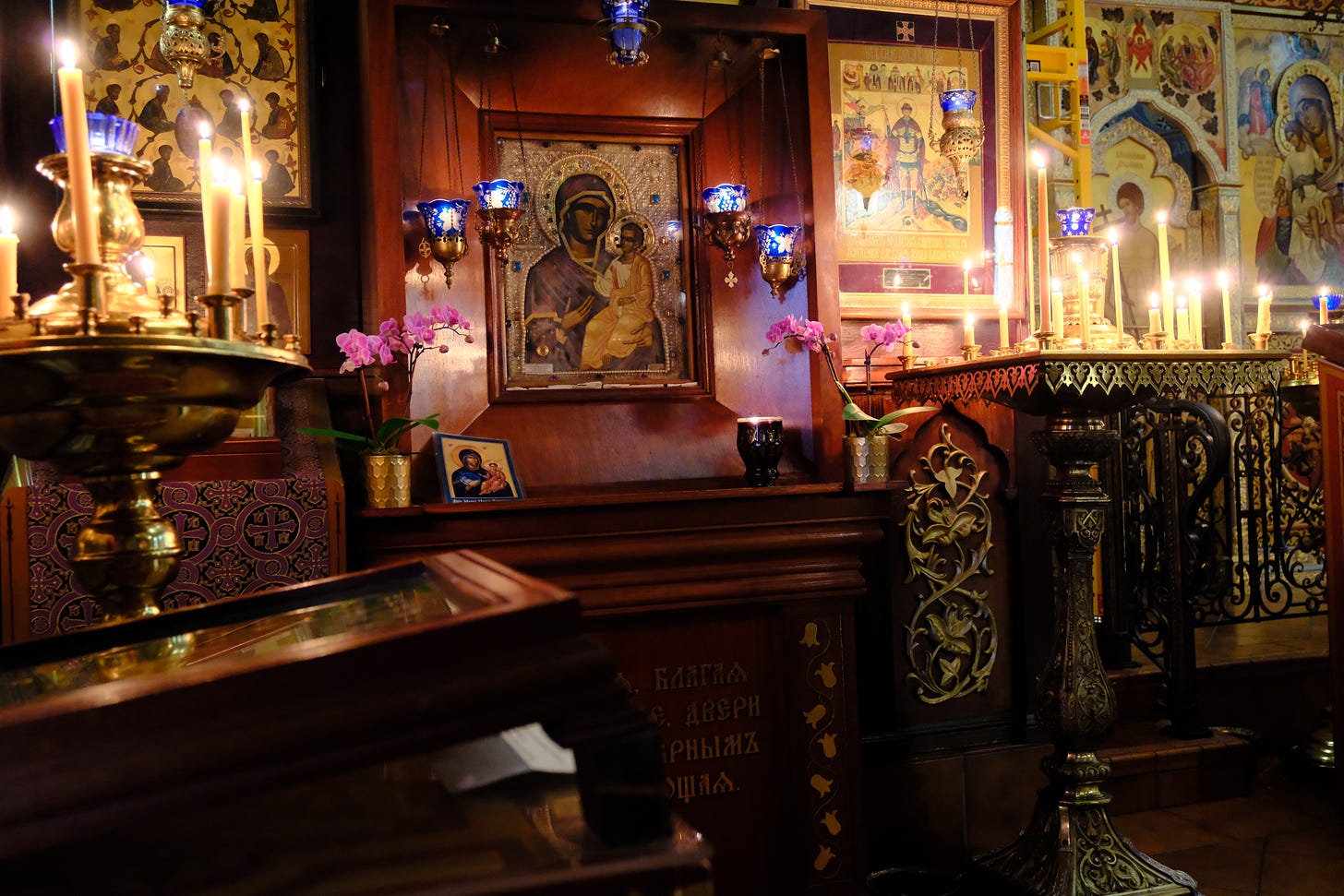
A metro ride home (with shenanigans!) and a fast sleep brought us to the second day of our journey. We gathered at St. Nicholas Cathedral for Divine Liturgy, then had a lovely brunch at the National Cathedral coffee shop, Open City. The warm weather and bustle of large crowds of tourists lent a festive feel to the atmosphere.
Following brunch we moved to The Museum at Dumbarton Oaks to view the collection of Byzantine treasures that are housed there.
From there we walked through Georgetown to consider its incredible beauty as an icon of how a city develops and is beautified over time. From there we enjoyed yet another lovely Lenten meal in the Watergate complex, followed by a walking tour of the cherry blossoms which were in full, magnificent bloom. Along the way we stopped by the Potomac river, nearby the place where the recent collision of a Blackhawk helicopter and American Airlines flight occurred. We prayed memorial prayers for the victims of the tragedy, then continued our walk to the tidal basin and memorials.
The stops along the way were obvious points of interest for the casual traveler, but the contextualization of them within the “City as Liturgy” paradigm made all the difference. A friend of mine asked me how the pilgrimage was and I heard myself giving my honest review. What I told her amounted to this: I felt as if a lifetime of rough, scaly, and encrusted ideas concerning the city that had formed over years of encroaching pessimism began to crack and fall away to reveal my former love of the city that needed to be renewed and restored. Like scraping away barnacles encrusting the bottom of a boat (which impede movement and lead to decay of the vessel) the pilgrimage served to restore me and bring a fresh flow of appreciation and even reconciliation with this place that is so critical to my home and life.
When I was a young woman, I had great love for going into the city, watching the comings and goings of people there, seeing the museums, even taking part in the public displays of governance, to the extent that they were accessible. I remember during the long days of Judge Clarence Thomas’s confirmation hearings, jumping on the metro with a friend and heading into the city to try to get into the committee sessions and listen in person to this curious event. We ended up waiting in line all day and never getting in because the committee took no breaks, but the people waiting outside listened in with hand-held radios and talked eagerly about the goings-on. It was a civic experience the likes of which I’ll never repeat. Another time I proudly brought an international friend to the Capitol but because of our late planning and lack of tickets, we could not enter the Senate chamber. Who did I run into on the elevator but my own Senator, Joseph Biden (maybe you’ve heard of him) who happily greeted us as if we were very important and introduced us to a colleague, who whisked us over to the chamber and let us in to watch the floor debates. Over the years in D.C., I’ve visited friends, shopped at outdoor markets, visited countless tourist sites and museums, seen the White House, attended professional sports events, theater productions and concerts, lost my child at the zoo (she was fine, but…), been inside historic places rarely seen by the general public, eaten in restaurants, and worshiped at great cathedrals—all within this city to which I am inextricably linked. How and at what point did I come to resent the very place in whose liturgy I’ve participated for my whole life?
Certainly, this city in particular is a lightening rod for media propaganda and political biases which play a key role in fostering this resentment, and what are these but vehicles of reinforcement for positions borne out of hatred for “Other.” We are quick to identify our own “camp” as someplace that Christ could be but not in that “Other” place where heinous demons must be at work to accomplish evil ends. But truly Christian liturgy is the antithesis and even the antidote of propaganda and bias, because for better or worse, in whatever station we find ourselves, the Spirit of Christ is “everywhere present and filling all things.” When we who are Christians depart from the sanctuary of our own Divine Liturgy into the civic liturgy of the city, we carry within ourselves a wholeness, a fresh rendering of our identity with Christ, thereby renewing the city of man with the presence of the Kingdom of God.
By reentering the liturgy of the City of Washington, D.C. with fresh perspective, I am reminded that my job as an Orthodox Christian is not to be “for” or “against.” These are positions of force, even if being “for” something is intended for a perceived good. The people of this world and the communities that are borne out of them cannot be clearly judged as good or evil, but rather as outcomes of humanity’s sinful machinations. Thus, my job as a Christian is to glorify Christ’s dominion and actualize the Kingdom of God on Earth, thereby doing my part to redeem the community. This is done through prayer, humility, alms-giving, kindness, honesty, friendship, and joyful participation in things that are Beautiful. By example, the apostle Paul could never have reached the Roman world with the transforming message of Christ if he had been “against” Rome. Rather, he embraced chains and martyrdom—a product of the tyranny of Rome—as the Glory of Christ, and allowed Christ to be for him and present within him in every circumstance.
Philippians 4:11–13
Not that I am speaking of being in need, for I have learned, in whatever situation I am, to be content. I know how to be brought low, and I know how to abound. In any and every circumstance, I have learned the secret of facing plenty and hunger, abundance and need. I can do all things through him who strengthens me. (ESV)
At the end of this pilgrimage I find myself renewed in my love of place, renewed in my desire for the blessing of my city, and as a result my country, and content to reside here in the beautiful city that is our nation’s capital. This has nothing to do with politics, but everything to do with the magnitude of importance of my city for our nation and the whole world. If Washington, DC is well, the world is blessed. If it is corrupt, the rot trickles down into the world. More than anything, I carried away from this weekend a renewed sense of desire to pray for this city, this country, and the whole world. I, as a pilgrim, must carry with me the sacrament of Christ’s presence and participate in glorifying His dominion.
O Heavenly King, the Comforter, the Spirit of Truth who are everywhere present and filling all things, treasury of blessings and giver of life, come and abide in us, cleanse us from every impurity and save our souls, O Good One.
* To purchase the book The Ethics of Beauty by Dr. Timothy Patitsas, please visit the website of St. Nicholas Press for the best price and to help support an Orthodox publisher!
Patitsas, Timothy. The Ethics of Beauty. Maysville, MO: St. Nicholas Press, 2019. p. 627.
Ibid. p. 629.




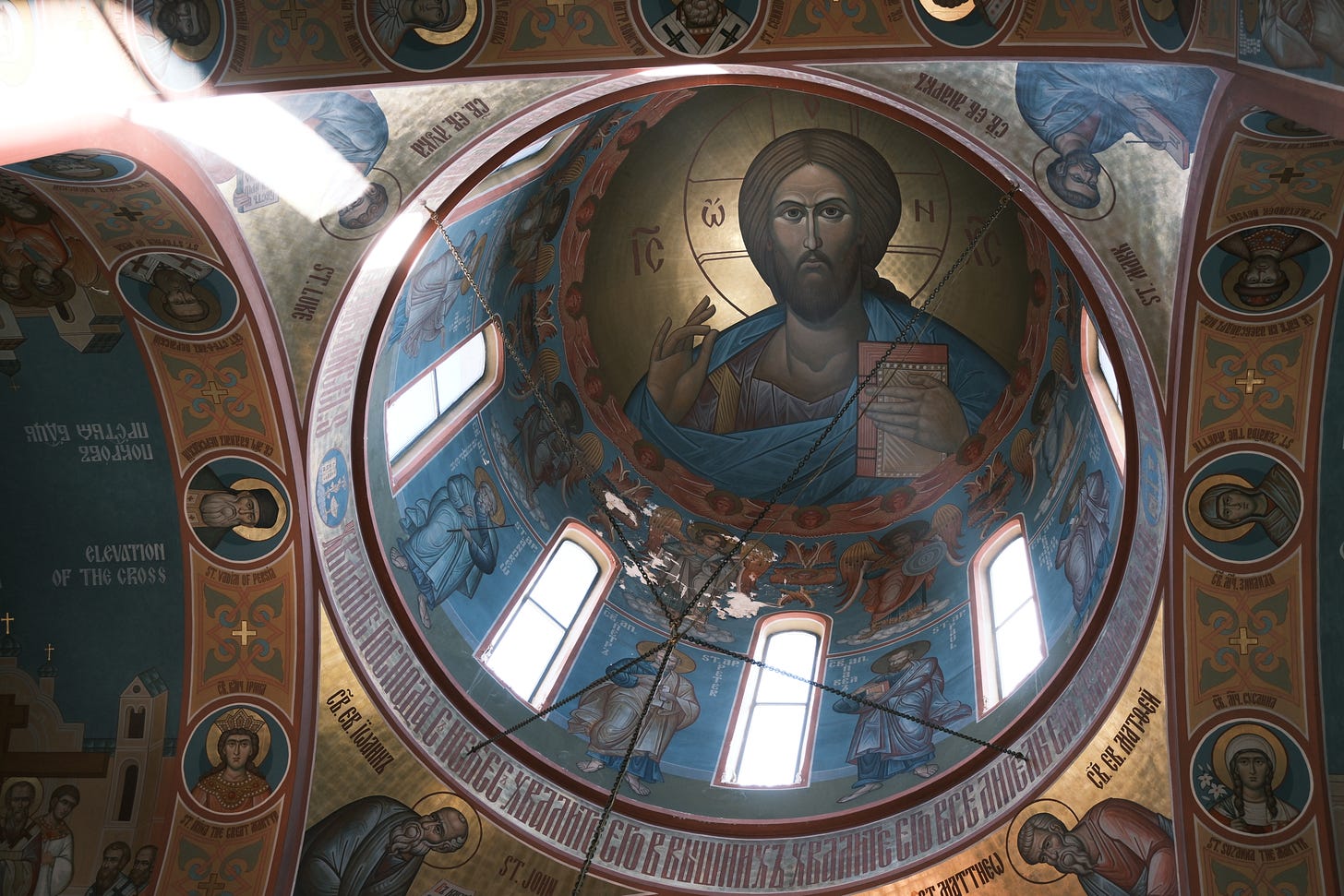

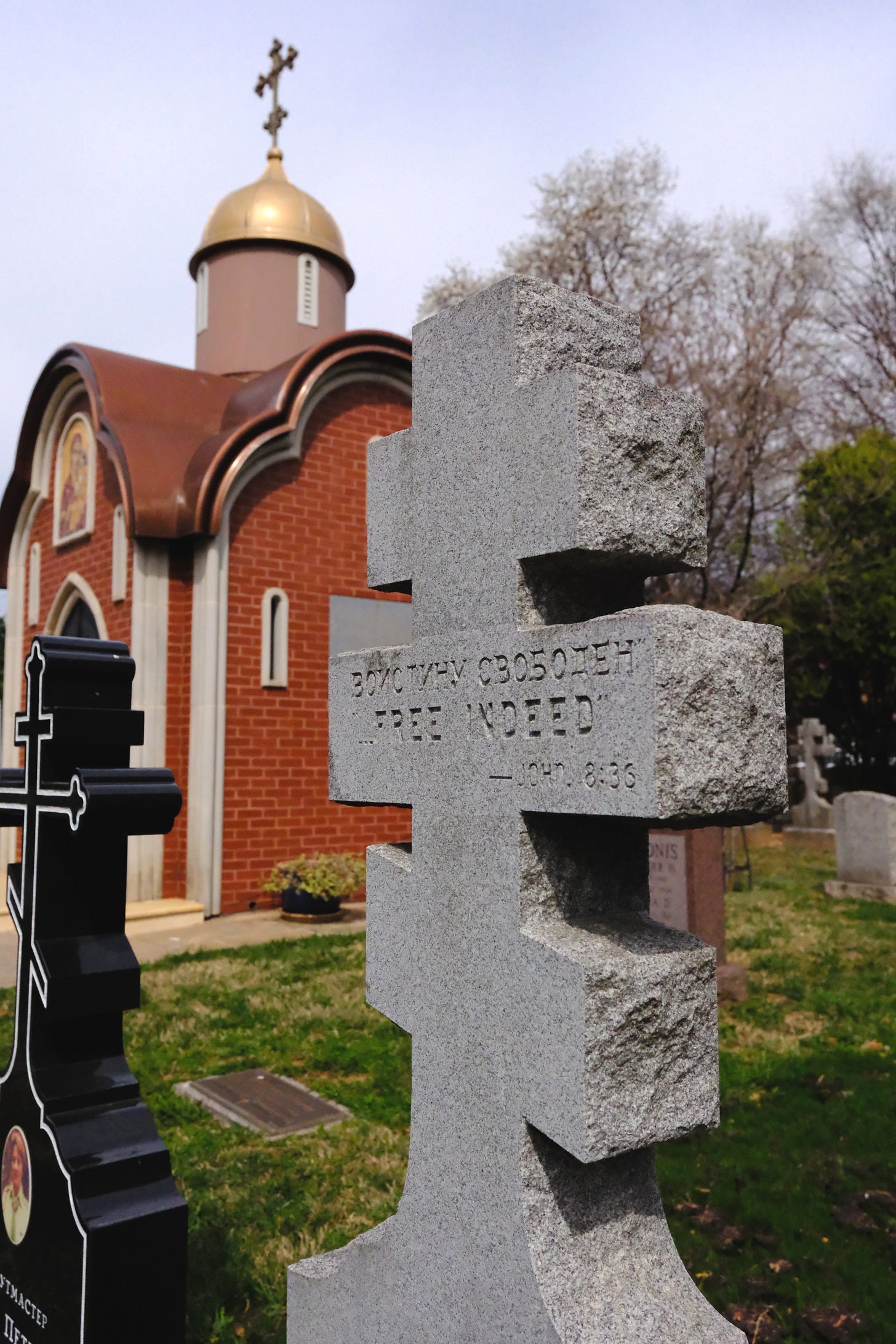
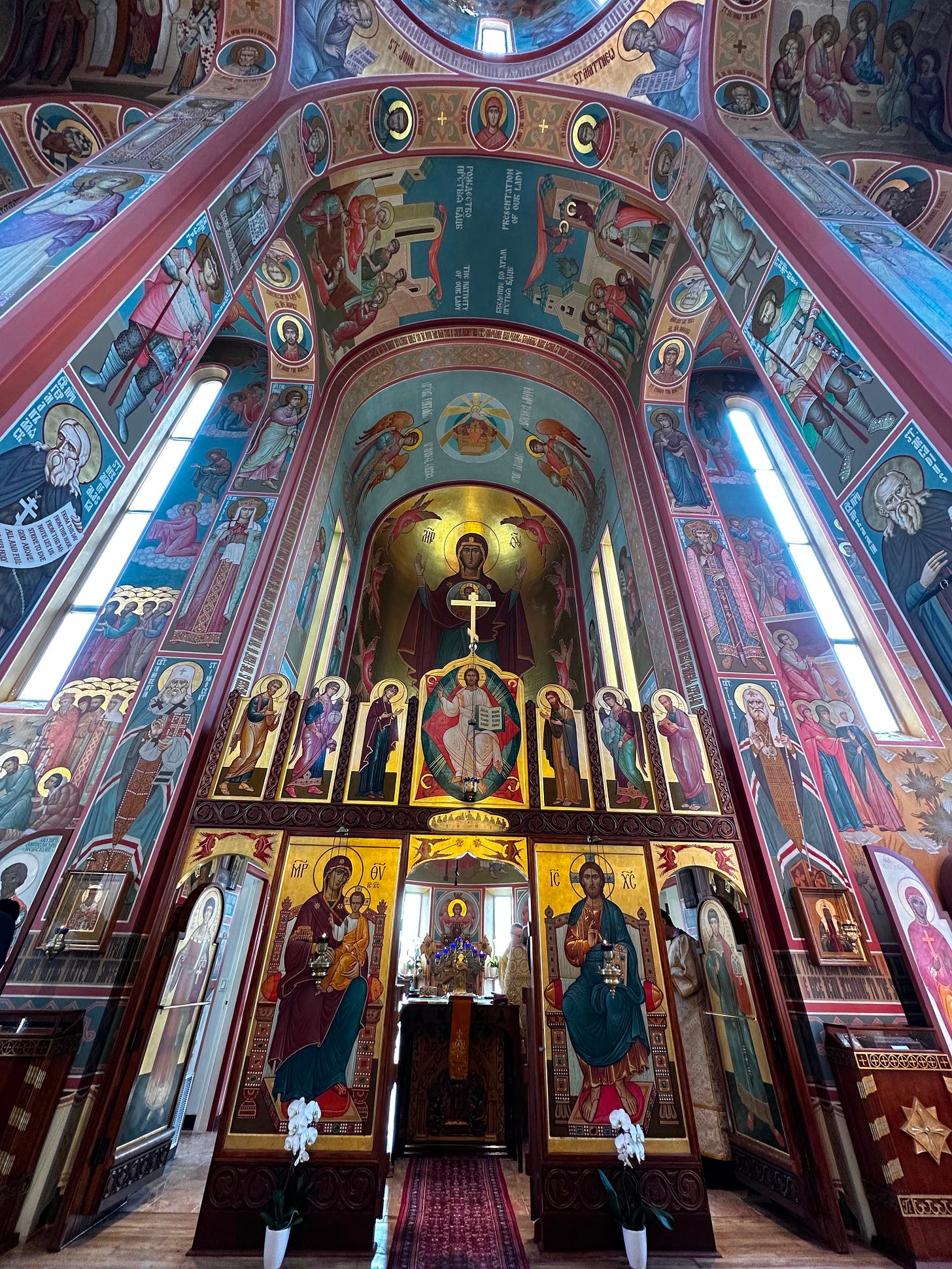


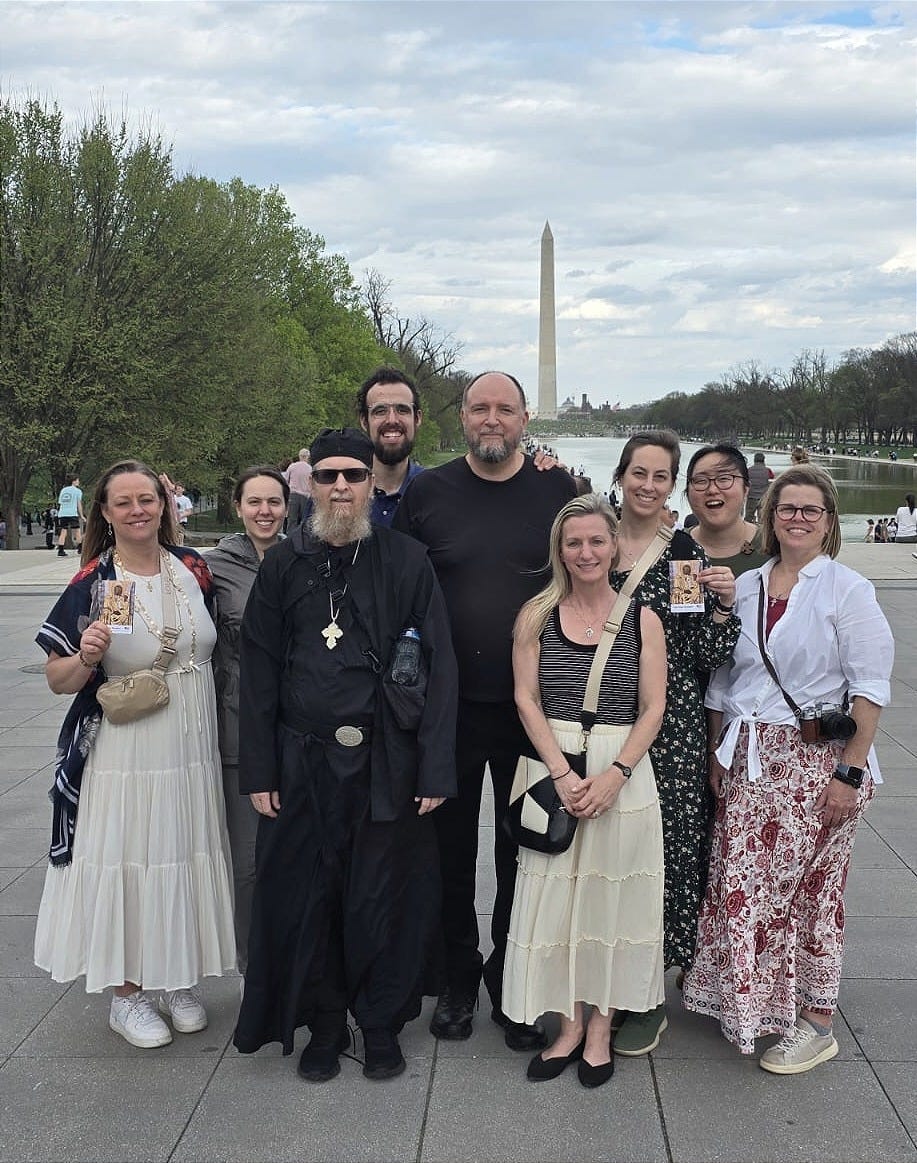
Beautiful piece, Kelly. Really wonderful.
Love this concept “City as Liturgy”! Interesting piece Kelly!